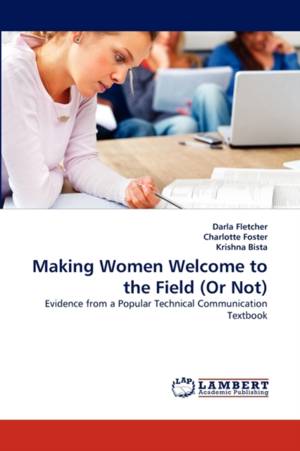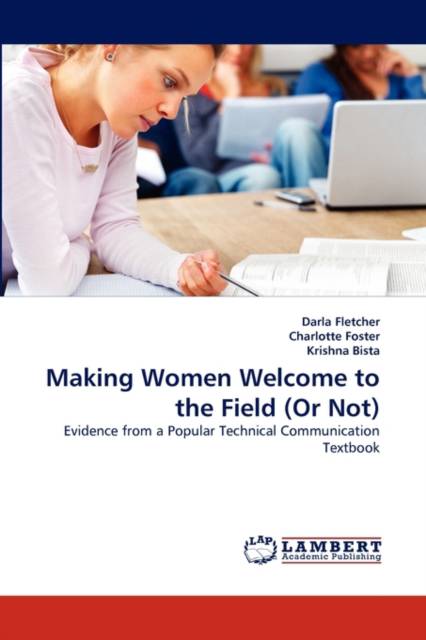
Door een staking bij bpost kan je online bestelling op dit moment iets langer onderweg zijn dan voorzien. Dringend iets nodig? Onze winkels ontvangen jou met open armen!
- Afhalen na 1 uur in een winkel met voorraad
- Gratis thuislevering in België vanaf € 30
- Ruim aanbod met 7 miljoen producten
Door een staking bij bpost kan je online bestelling op dit moment iets langer onderweg zijn dan voorzien. Dringend iets nodig? Onze winkels ontvangen jou met open armen!
- Afhalen na 1 uur in een winkel met voorraad
- Gratis thuislevering in België vanaf € 30
- Ruim aanbod met 7 miljoen producten
Zoeken
Making Women Welcome to the Field (or Not)
Evidence from a Popular Technical Communication Textbook
Darla Fletcher, Charlotte Foster, Krishna Bista
Paperback | Engels
€ 48,45
+ 96 punten
Omschrijving
This book examines portions of the first nine editions of a popular technical writing textbook, Reporting Technical Information, in an attempt to discern whether the text made female readers feel welcome to the profession of technical communication. In particular, instances of citations of authorities and illustrative hypothetical people in two chapters of each edition were classified by gender. Although these citations and examples were heavily male in the first edition and remained heavily male through the ninth edition, over the thirty-year period some changes were made to improve the gender balance. Awareness of gender, when selecting authorities to cite and when creating hypothetical characters to illustrate concepts, can help authors of future textbooks make them more welcoming of women and students of various ethnic backgrounds who will be using these textbooks.
Specificaties
Betrokkenen
- Auteur(s):
- Uitgeverij:
Inhoud
- Aantal bladzijden:
- 72
- Taal:
- Engels
Eigenschappen
- Productcode (EAN):
- 9783844323535
- Verschijningsdatum:
- 1/04/2011
- Uitvoering:
- Paperback
- Formaat:
- Trade paperback (VS)
- Afmetingen:
- 152 mm x 229 mm
- Gewicht:
- 117 g

Alleen bij Standaard Boekhandel
+ 96 punten op je klantenkaart van Standaard Boekhandel
Beoordelingen
We publiceren alleen reviews die voldoen aan de voorwaarden voor reviews. Bekijk onze voorwaarden voor reviews.











